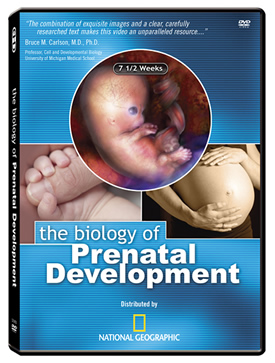Download English PDF Download Spanish PDF Download French PDF What is PDF?
Table of Contents
- THE EMBRYONIC PERIOD (THE FIRST 8 WEEKS)
-
- EMBRYONIC DEVELOPMENT: THE FIRST 4 WEEKS
-
- Chapter 3 – Fertilization
- Chapter 4 – DNA, Cell Division, and Early Pregnancy Factor (EPF)
- Chapter 5 – Early Stages (Morula and Blastocyst) and Stem Cells
- Chapter 6 – 1 to 1 1/2 Weeks: Implantation and Human Chorionic Gonadotropin (hCG)
- Chapter 7 – The Placenta and Umbilical Cord
- Chapter 8 – Nutrition and Protection
- Chapter 9 – 2 to 4 Weeks: Germ Layers and Organ Formation
- Chapter 10 – 3 to 4 Weeks: The Folding of the Embryo
- EMBRYONIC DEVELOPMENT: 4 TO 6 WEEKS
-
- Chapter 11 – 4 Weeks: Amniotic Fluid
- Chapter 12 – The Heart in Action
- Chapter 13 – Brain Growth
- Chapter 14 – Limb Buds and Skin
- Chapter 15 – 5 Weeks: Cerebral Hemispheres
- Chapter 16 – Major Airways
- Chapter 17 – Liver and Kidneys
- Chapter 18 – Yolk Sac and Germ Cells
- Chapter 19 – Hand Plates and Cartilage
- EMBRYONIC DEVELOPMENT: 6 TO 8 WEEKS
-
- Chapter 20 – 6 Weeks: Motion and Sensation
- Chapter 21 – The External Ear and Blood Cell Formation
- Chapter 22 – The Diaphragm and Intestines
- Chapter 23 – Hand Plates and Brainwaves
- Chapter 24 – Nipple Formation
- Chapter 25 – Limb Development
- Chapter 26 – 7 Weeks: Hiccups and Startle Response
- Chapter 27 – The Maturing Heart
- Chapter 28 – Ovaries and Eyes
- Chapter 29 – Fingers and Toes
- THE 8-WEEK EMBRYO
- THE FETAL PERIOD (8 WEEKS THROUGH BIRTH)
-
- Chapter 37 – 9 Weeks: Swallows, Sighs, and Stretches
- Chapter 38 – 10 Weeks: Rolls Eyes and Yawns, Fingernails & Fingerprints
- Chapter 39 – 11 Weeks: Absorbs Glucose and Water
- Chapter 40 – 3 to 4 Months (12 to 16 Weeks): Taste Buds, Jaw Motion, Rooting Reflex, Quickening
- Chapter 41 – 4 to 5 Months (16 to 20 Weeks): Stress Response, Vernix Caseosa, Circadian Rhythms
- Chapter 42 – 5 to 6 Months (20 to 24 Weeks): Responds to Sound; Hair and Skin; Age of Viability
- Chapter 43 – 6 to 7 Months (24 to 28 Weeks): Blink-Startle; Pupils Respond to Light; Smell and Taste
- Chapter 44 – 7 to 8 Months (28 to 32 Weeks): Sound Discrimination, Behavioral States
- Chapter 45 – 8 to 9 Months (32 to 36 Weeks): Alveoli Formation, Firm Grasp, Taste Preferences
- Chapter 46 – 9 Months to Birth (36 Weeks through Birth)
Chapter 43 6 to 7 Months (24 to 28 Weeks): Blink-Startle; Pupils Respond to Light; Smell and Taste
24 週までには 瞼が再び開き
瞬き-驚愕反応が 胎児に現れます
突然の大きな音に対する反応は
通常 女の胎児に早く見られます
大きな音は 胎児の健康に
悪影響を及ぼすと
調査によっては 報告しています
直接の結果として
長期にわたる心拍数の増加
過度の胎児の嚥下
突発的な行動の変化
長期の影響では 聴覚の喪失
などが挙げられます
胎児の呼吸速度は
1 分間に44 回の吸入-呼気
となります
妊娠後期において
胎児の消費するエネルギーの
50% が 脳の発達に費やされます
脳の重量は400 ~ 500% 増加し
26 週までには 眼から
涙が生成されます
瞳孔は 早ければ27 週に 光に対して反応します 網膜に到達する光の調節を 生涯行うわけです
瞳孔は 早ければ27 週に 光に対して反応します 網膜に到達する光の調節を 生涯行うわけです
嗅覚に必要な
全要素も機能しています
未熟児における研究を通じて
受精後26 週には
においを察知できることが
分かっています
羊水に甘い物質を投与すると 胎児の嚥下回数が増え 逆に 苦い物質があると 嚥下回数が低下します 表情の変化も しばしば見られます
羊水に甘い物質を投与すると 胎児の嚥下回数が増え 逆に 苦い物質があると 嚥下回数が低下します 表情の変化も しばしば見られます
歩行に似通った
ステップを踏む動作で
胎児は 180度の転換を行います
皮膚の下で体脂が増えるにつれ
胎児の体の皺も 少なくなります
脂肪は 体温維持と
出生後のエネルギー貯蔵に
重要な役割を果たします
Chapter 44 7 to 8 Months (28 to 32 Weeks): Sound Discrimination, Behavioral States
28 週までに 胎児は
高調音と低調音を
区別できるようになります
30 週までには 呼吸が
ごく通常の活動となり
平均の胎児において
30 ~ 40% の割合で起こります
妊娠の最後の4 ヵ月において
胎児には 休みを間に入れた
協調した活動が見られます
これらの行動の状況は
いよいよ複雑さを増す
中枢神経の働きを 反映しています
Chapter 45 8 to 9 Months (32 to 36 Weeks): Alveoli Formation, Firm Grasp, Taste Preferences
32 週頃までには
空気の「ポケット」細胞である 肺胞が
肺で発達し始めます
出生後 8 歳まで
その形成は続きます
35 週になると 胎児は
確かな把握反射ができます
胎児が様々な物質に
さらされることにより
出生後の味覚の好き嫌いに
影響を与えるようです
たとえば 胎児の母親が
リコリスキャンディを味付けする
アニスを食べたとすると
生まれてきた子供は
アニスが好きになり
アニスにさらされていない
新生児は嫌悪を示します
Chapter 46 9 Months to Birth (36 Weeks through Birth)
エストロゲンと呼ばれる
ホルモンを大量に放出し
胎児は 陣痛を誘発し
胎児から新生児への
移行が始まります
強い子宮の収縮により 陣痛が起こり 出産に至るのです
強い子宮の収縮により 陣痛が起こり 出産に至るのです
受精から誕生
そしてその後
ヒトの発達は ダイナミックで
継続的であり 複雑です
この驚異的な過程についての
新しい発見により
一生を通じての健康に
胎児の発育が
大きな影響を与えることが
分ってきています
初期のヒトの発達に対する 理解が進むにつれて 出生前と出生後における 健康の促進も また可能と なることでしょう
初期のヒトの発達に対する 理解が進むにつれて 出生前と出生後における 健康の促進も また可能と なることでしょう


